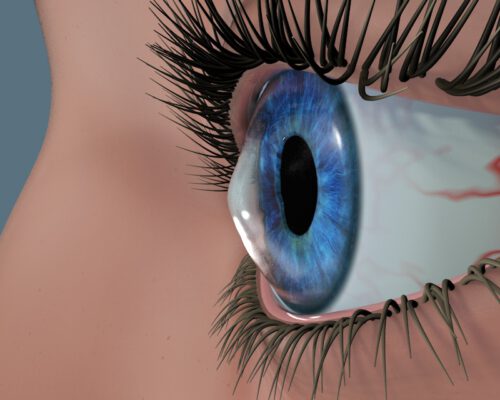De vastgestelde prevalentie van keratoconus onder de algemene bevolking is ongeveer 1 op 2000, maar in sommige delen van de wereld lijkt het vaker voor te komen. De aandoening wordt over het algemeen zichtbaar tijdens de puberteit en kan in ernst toenemen tot de leeftijd van ongeveer 40 jaar, wanneer er vaak stabilisatie lijkt op te treden. Sterke veranderingen kunnen worden gezien wanneer hormoonwisselingen binnen het lichaam plaatsvinden. Denk hierbij bijvoorbeeld aan de puberteit of tijdens zwangerschap of hormoonkuren. Het is belangrijk dat keratoconus regelmatig wordt gecontroleerd om progressie tijdig vast te kunnen stellen.

The exact cause of keratoconus is not yet known. It seems that genetic, environmental and mechanical factors all play a role in the development of the condition. A genetic predisposition may exist where a trigger from the environment is needed for the disorder to develop. Also, keratoconus often seems to occur together with atopy, Down’s syndrome, Ehlers-Danlos syndrome, Marfan and Leber congenital amaurosis. Recent research has also shown that inflammatory mediators may play a role in the development and progression of keratoconus and that excessive and harsh rubbing of the eyes is also a risk factor for the development and progression of this condition.
Depending on the severity of the disease, all layers of the cornea can become involved in the disease process. The posterior (basal) epithelial cells of the cornea may decline in function, and Bowman’s layer may become ruptured, filling these regions with stroma. The stroma loses its firmness, partly due to a decrease and change in the organisation of the lamellae. Descemet’s membrane and endothelium are usually not affected. However, a break in Descemet’s membrane may occur in severe keratoconus.
To make a correct diagnosis, chart any changes to the disease and determine the right follow-up or treatment, several tests will be carried out during your visit to our outpatients’ clinic, such as:
Would you like to know more? Download our folder here.
The choice of treatment for keratoconus and other corneal ectasias is based on the severity of the disease, the nature of the symptoms and the presence of any progression.
Since a strong correlation has been found between the worsening of keratoconus and eye rubbing, the first advice is to stop rubbing your eyes. Research has shown that this has a beneficial effect on stabilisation. If an allergy is causing the rubbing, the ophthalmologist may prescribe medication.
In the early stages of ectasia, visual acuity can often be improved by the correction of glasses. If correcting glasses does not have a sufficient effect, vision can be improved with the help of contact lenses. This method is possible in both incipient and advanced corneal ectasia. There are different types of contact lenses available, including soft lenses, shape-stable lenses, hybrid lenses and scleral lenses. Advice and fitting of contact lenses are available at the clinic. This is done by Visser Contactlenzen.
Sometimes corneal surgery will be recommended or even needed. Different treatments are available, depending on the severity of the keratoconus and the intended goal.
Would you like to know more? Download our folder here.